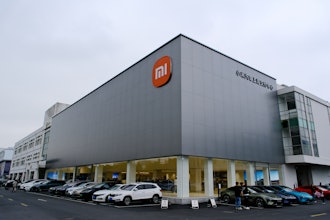Job shops are one of the few branches of manufacturing that are likely to keep their production domestic. But that doesn't mean that job shops don't have to compete with the rock-bottom labor and prices of foreign competition. As overseas competition continues to put the squeeze on the manufacturing industry, job shops have turned to technology to help stay competitive in a global economy.
A savvy use of technology and a skills advantage are two things that will keep job shops profitable even as the trend of outsourcing continues. At Software Advice, a site that reviews mrp systems, I recently dug into the job shop industry to find out which technologies enhance the skills advantage of job shops the most. I came up with five technologies that I see at the forefront of driving competition: 3D computer-aided design (CAD), laser cutting tools, shop floor software, iPad workforce integration, and outsourced marketing firms.
Here's a bit of elaboration on three of these:
1. CAD Modeling Programs
The design process can be a sticking point in production. Historically, most shops have relied on outside engineering firms to take care of design and prototyping. Today, however, we're starting to see the convergence of design and production. Computer-aided design (CAD) has made it possible for these two aspects of manufacturing to exist under a single roof. CAD software automates a significant amount of the design process by preloading templates and snapping contours lines with the click of the mouse.
Since the design can be fed into an automated computer-aided manufacturing (CAM) device, CAD also improves the efficiency of production. Once the product is designed, a significant portion of production can be handled by machine with the finishing touches put on by hand. This limits the painstaking process of machine retooling and tool path programming.
2. Shop Floor Software
Of course, having the machines do much of the work for you is rather meaningless if your machines aren't running at an optimal level. If it can't be measured, it can't be improved. Shop floor software can help improve efficiency in many ways but one of the recent innovations is the ability to track machine efficiency levels. Previously, most machine data was either not recorded at all, or poorly recorded by hand. This effectively created a black hole of machine data.
Today, machine monitoring software can track overall equipment effectiveness in real-time. This will monitor metrics such as the number of parts the machine produces in an hour, machine availability time, and production control. Having this information at the disposal of the job shop allows for constant minor tweaks to be made to the machines, which can result in major productivity increases.
3. Outsourced Marketing Firms
Let's face it -- the skill set of job shops is in building things, not creating compelling marketing literature. Service firms that play middle man between original equipment manufacturers (OEMs) and job shops can be a great way to bridge the gap between manufacturing and marketing. The service firm Manufacturing Mart is a great example, as they not only handle marketing and lead generation efforts - but they'll also design and prototype the product, if requested. Outsourcing these time-consuming tasks can be a great benefit to job shops and allow them to focus singularly on production. The outsourced firm is likely also better than the shop itself at finding the right kinds of clients.
___
To see the other technologies that I review in my article, visit the Software Advice blog at: 5 Technologies Driving Job Shop Competitiveness. You can also follow me on Twitter at @ERPAdvice or shoot me an email at [email protected] if you'd like to get in touch personally.


















